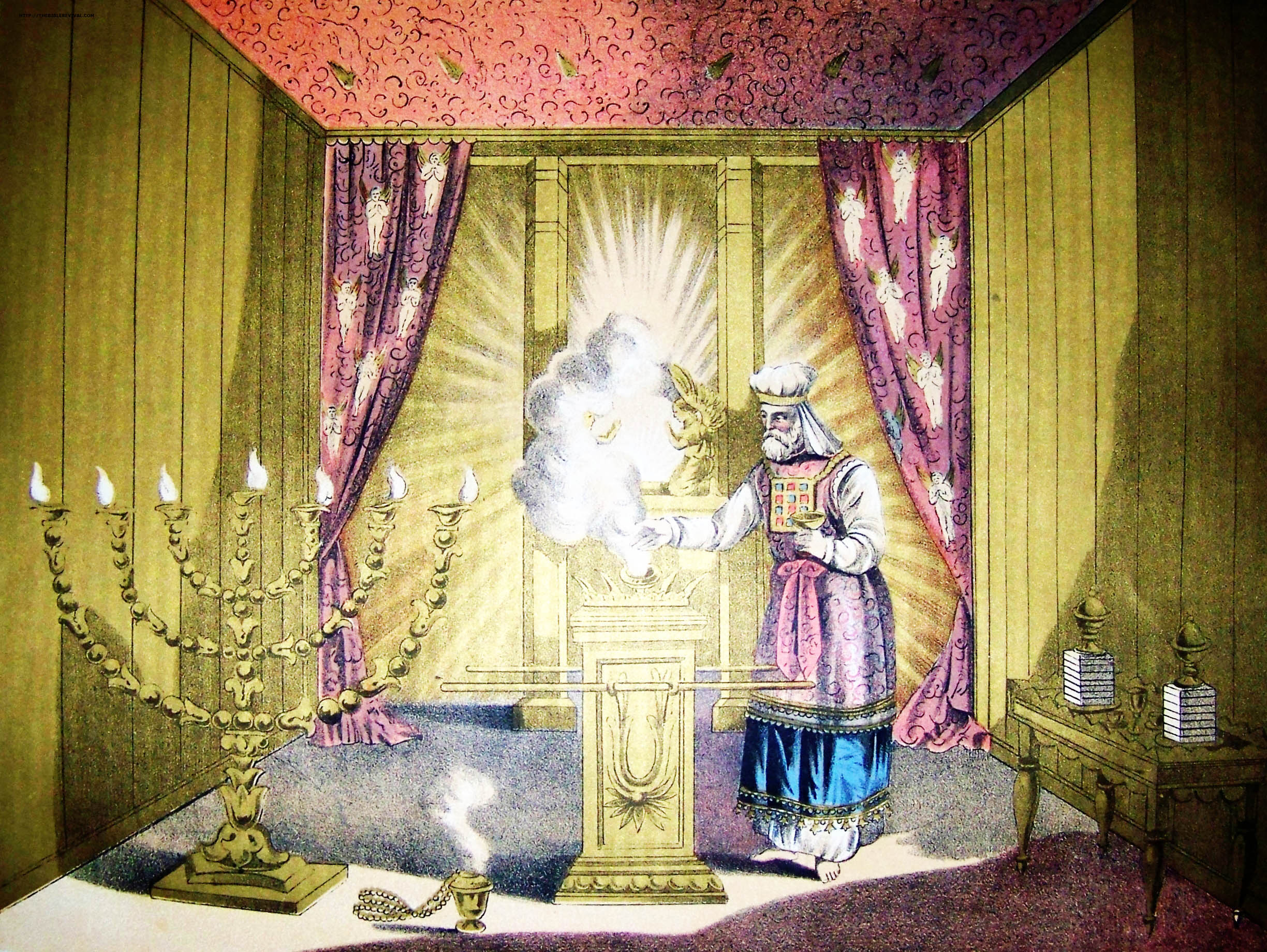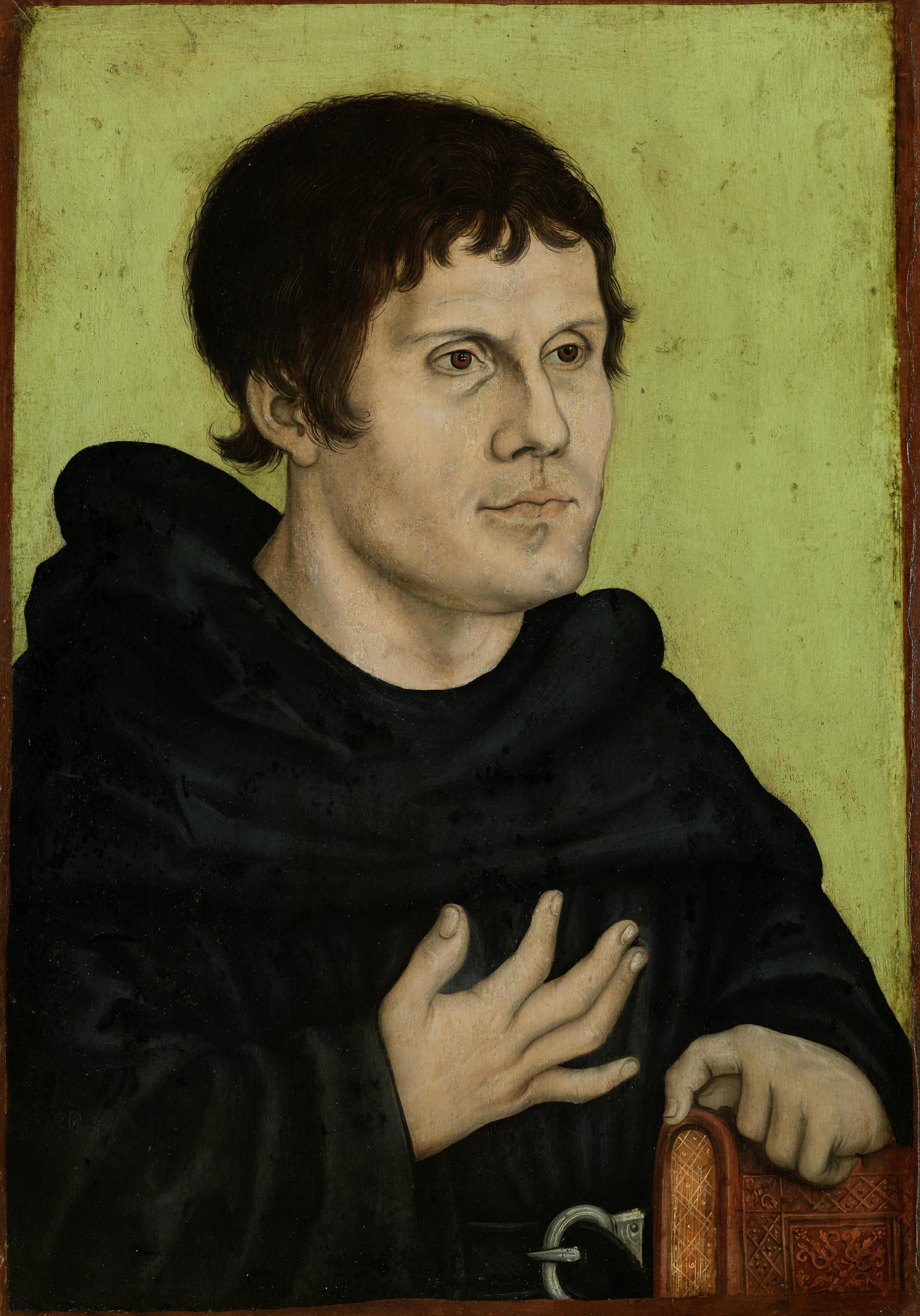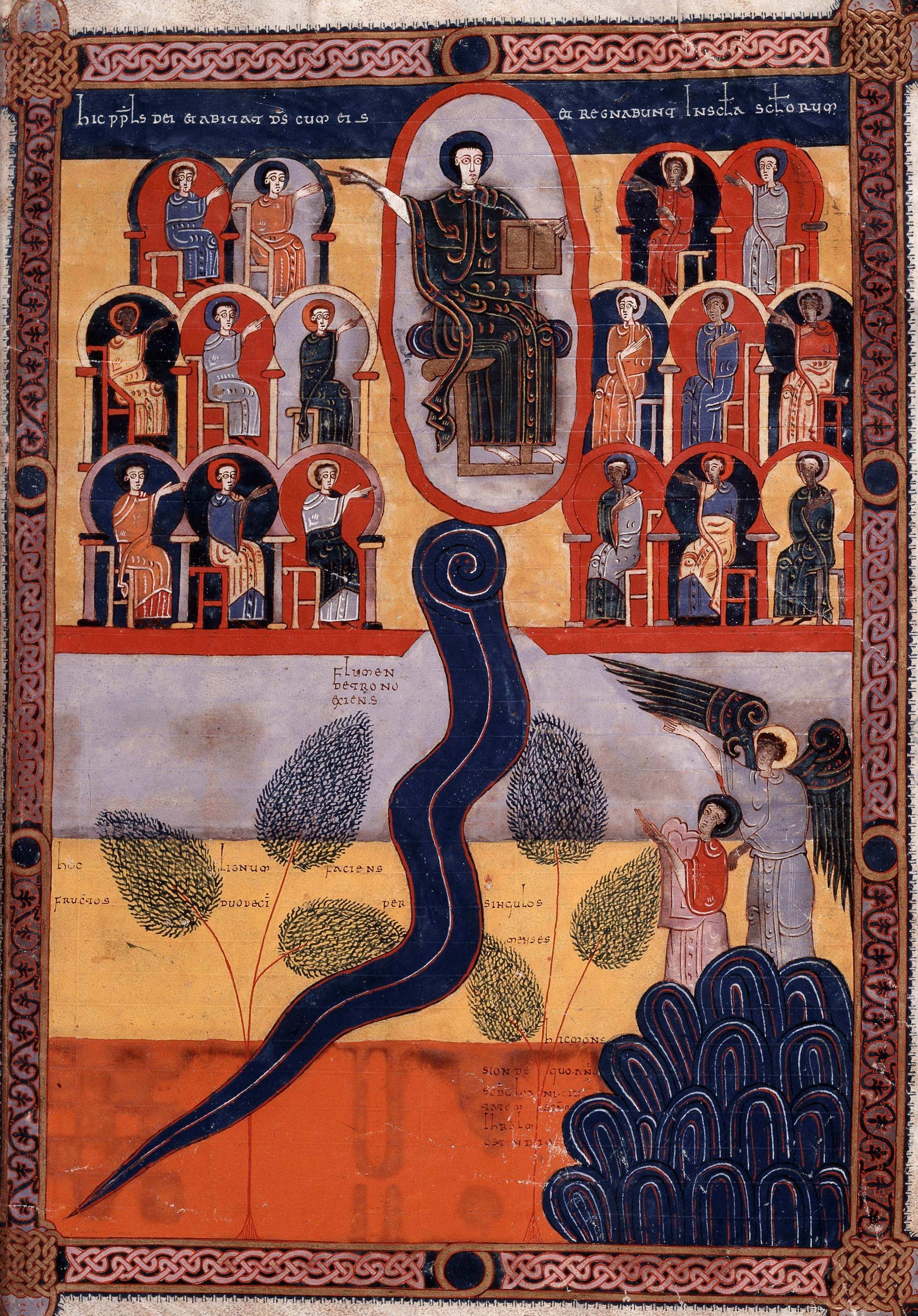|
Jacinth
Jacinth (, ) or hyacinth () is a yellow-red to red-brown variety of zircon used as a gemstone. In Exodus 28:19, one of the precious stones set into the ''hoshen'' (the breastplate worn by the High Priest of Israel) is called, in Hebrew, '' leshem'', which is often translated into English as "jacinth". The true identity of this stone has been a source of confusion since at least the first century; the modern identification of ''leshem'' with jacinth seems to have been popularised by Martin Luther, who may in turn have been following a fourth-century tradition. In Revelation 21:20, one of the foundation stones of the New Jerusalem is hyacinth (Greek: ''hyakinthos''). However, ''Strong's Concordance'' and ''Thayer's Greek Lexicon'' describe this as a stone of the colour of the hyacinth plant, i.e. dark blue. The stone intended may be the sapphire Sapphire is a precious gemstone, a variety of the mineral corundum, consisting of aluminium oxide () with trace amounts of ele ... [...More Info...] [...Related Items...] OR: [Wikipedia] [Google] [Baidu] |
Priestly Breastplate
The priestly breastplate or breastpiece of judgment ( ''ḥōšen'') was a sacred breastplate worn by the High Priest of Israel, High Priest of the Israelites, according to the Book of Exodus. In the biblical account, the breastplate is termed the ''breastplate of judgment'' ( ''ḥōšen mišpāṭ'' – ), because the Urim and Thummim ( ''hāʾūrīm wəhattummīm'') were placed upon it (). These elements of the breastplate are said in the Exodus verse to carry the judgment ( ''mišpāṭ'') of God concerning the Israelites at all times. Hebrew Bible According to the description in Exodus, this breastplate was attached to the tunic-like garment known as an ephod by gold chains/cords tied to the gold rings on the ephod's shoulder straps and by blue ribbon tied to the gold rings at the belt of the ephod. The biblical description states that the breastplate was also to be made from the same material as the ephod—embroidery of 3 colors of dyed wool and linen—and was to be o ... [...More Info...] [...Related Items...] OR: [Wikipedia] [Google] [Baidu] |
Zirconium Minerals
Zirconium is a chemical element; it has symbol Zr and atomic number 40. First identified in 1789, isolated in impure form in 1824, and manufactured at scale by 1925, pure zirconium is a lustrous transition metal with a greyish-white color that closely resembles hafnium and, to a lesser extent, titanium. It is solid at room temperature, ductile, malleable and corrosion-resistant. The name ''zirconium'' is derived from the name of the mineral zircon, the most important source of zirconium. The word is related to Persian '' zargun'' (zircon; ''zar-gun'', "gold-like" or "as gold"). Besides zircon, zirconium occurs in over 140 other minerals, including baddeleyite and eudialyte; most zirconium is produced as a byproduct of minerals mined for titanium and tin. Zirconium forms a variety of inorganic compounds, such as zirconium dioxide, and organometallic compounds, such as zirconocene dichloride. Five isotopes occur naturally, four of which are stable. The metal and its alloys are m ... [...More Info...] [...Related Items...] OR: [Wikipedia] [Google] [Baidu] |
Zircon
Zircon () is a mineral belonging to the group of nesosilicates and is a source of the metal zirconium. Its chemical name is zirconium(IV) silicate, and its corresponding chemical formula is Zr SiO4. An empirical formula showing some of the range of substitution in zircon is (Zr1–y, REEy)(SiO4)1–x(OH)4x–y. Zircon precipitates from silicate melts and has relatively high concentrations of high field strength incompatible elements. For example, hafnium is almost always present in quantities ranging from 1 to 4%. The crystal structure of zircon is tetragonal crystal system. The natural color of zircon varies between colorless, yellow-golden, red, brown, blue, and green. The name derives from the Persian ''zargun'', meaning "gold-hued". This word is changed into " jargoon", a term applied to light-colored zircons. The English word "zircon" is derived from ''Zirkon'', which is the German adaptation of this word. Yellow, orange, and red zircon is also known as " hyacint ... [...More Info...] [...Related Items...] OR: [Wikipedia] [Google] [Baidu] |
Gemstone
A gemstone (also called a fine gem, jewel, precious stone, semiprecious stone, or simply gem) is a piece of mineral crystal which, when cut or polished, is used to make jewellery, jewelry or other adornments. Certain Rock (geology), rocks (such as lapis lazuli, opal, and obsidian) and occasionally organic chemistry, organic materials that are not minerals (such as amber, Jet (gemstone), jet, and pearl) may also be used for jewelry and are therefore often considered to be gemstones as well. Most gemstones are hard, but some softer minerals such as brazilianite may be used in jewelry because of their color or Lustre (mineralogy), luster or other physical properties that have aesthetic value. However, generally speaking, soft minerals are not typically used as gemstones by virtue of their brittleness and lack of durability. Found all over the world, the industry of coloured gemstones (i.e. anything other than diamonds) is currently estimated at US$1.55billion and is projected to s ... [...More Info...] [...Related Items...] OR: [Wikipedia] [Google] [Baidu] |
Book Of Exodus
The Book of Exodus (from ; ''Šəmōṯ'', 'Names'; ) is the second book of the Bible. It is the first part of the narrative of the Exodus, the origin myth of the Israelites, in which they leave slavery in Biblical Egypt through the strength of Yahweh, their deity, who according to the story Chosen people, chose them as his people. The Israelites then journey with the prophet Moses to biblical Mount Sinai, Mount Sinai, where Yahweh gives the Ten Commandments and they enter into a Mosaic covenant, covenant with Yahweh, who promises to make them a "holy nation, and a kingdom of priests" on condition of their faithfulness. He gives them laws and instructions to build the Tabernacle, the means by which he will come from heaven and dwell with them and lead them in a holy war to conquer Canaan (the "Promised Land"), which has earlier, according to the Book of Genesis, been promised to the "seed" of Abraham, the patriarch of the Israelites. Though traditionally Mosaic authorship, ascri ... [...More Info...] [...Related Items...] OR: [Wikipedia] [Google] [Baidu] |
High Priest Of Israel
In Judaism, the High Priest of Israel (, lit. ‘great priest’; Aramaic: ''Kahana Rabba'') was the head of the Israelite priesthood. He played a unique role in the worship conducted in the Tabernacle and later in the Temple in Jerusalem, as well as in some non-ritual matters. Like all priests, he was required to be descended from Aaron (the first biblical priest). But unlike other priests, the high priest followed more restrictive laws, wore unique priestly garments, and was the only priest allowed to perform certain ceremonies. Titles The high priest is referred to by a number of titles in the Hebrew Bible; the title ''kohen gadol'' did not become dominant until well into the Second Temple period. In addition to the title of "great priest" (''kohen gadol'') which later became the standard Hebrew title, the term "head priest" (''kohen harosh''; ) was used, as was "anointed priest" (''kohen mashiach''; )., , The Torah sometimes uses longer descriptions: "the great priest ... [...More Info...] [...Related Items...] OR: [Wikipedia] [Google] [Baidu] |
Martin Luther
Martin Luther ( ; ; 10 November 1483 – 18 February 1546) was a German priest, Theology, theologian, author, hymnwriter, professor, and former Order of Saint Augustine, Augustinian friar. Luther was the seminal figure of the Reformation, Protestant Reformation, and his theological beliefs form the basis of Lutheranism. He is widely regarded as one of the most influential figures in Western world, Western and History of Christianity, Christian history. Born in Eisleben, Luther was ordained to the Priesthood in the Catholic Church, priesthood in 1507. He came to reject several teachings and practices of the contemporary Catholic Church, Roman Catholic Church, in particular the view on indulgences and papal authority. Luther initiated an international debate on these in works like his ''Ninety-five Theses'', which he authored in 1517. In 1520, Pope Leo X demanded that Luther renounce all of his writings, and when Luther refused to do so, Excommunication in the Catholic Church, ... [...More Info...] [...Related Items...] OR: [Wikipedia] [Google] [Baidu] |
Book Of Revelation
The Book of Revelation, also known as the Book of the Apocalypse or the Apocalypse of John, is the final book of the New Testament, and therefore the final book of the Bible#Christian Bible, Christian Bible. Written in Greek language, Greek, its title is derived from the Incipit, first word of the text, ''apocalypse'' (), which means "revelation" or "unveiling". The Book of Revelation is the only Apocalyptic literature, apocalyptic book in the Development of the New Testament canon, New Testament canon, and occupies a central place in Christian eschatology. The book spans three literary genres: the Letter (message), epistolary, the Apocalyptic literature, apocalyptic, and the prophetic. It begins with John, on the island of Patmos in the Aegean Sea, addressing letters to the "Seven Churches of Asia" with exhortations from Christ. He then describes a series of prophetic and symbolic Vision (spirituality), visions, including figures such as a Woman clothed with the sun with the ... [...More Info...] [...Related Items...] OR: [Wikipedia] [Google] [Baidu] |
New Jerusalem
In the Book of Ezekiel in the Hebrew Bible, New Jerusalem (, ''YHWH šāmmā'', YHWH sthere") is Ezekiel's prophetic vision of a city centered on the rebuilt Holy Temple, to be established in Jerusalem, which would be the capital of the Messianic Kingdom, the meeting place of the twelve tribes of Israel, during the Messianic era. The prophecy is recorded by Ezekiel as having been received on Yom Kippur of the year 3372 of the Hebrew calendar. In the Book of Revelation in the New Testament, the city is also called the Heavenly Jerusalem, as well as being called Zion in other books of the Christian Bible. Judaism and origin In Jewish mysticism, there are two Gardens of Eden and two Promised Lands: the heavenly invisible one and the earthly visible one that is a copy of the heavenly invisible one. Heaven in Jewish mysticism includes a heavenly Promised land – including Jerusalem, the temple, and the Ark of the Covenant – and a heavenly Garden of Eden – including t ... [...More Info...] [...Related Items...] OR: [Wikipedia] [Google] [Baidu] |
Strong's Concordance
''The Exhaustive Concordance of the Bible'', generally known as Strong's Concordance, is a Bible concordance, an index of every word in the King James Version (KJV), constructed under the direction of American theologian James Strong. Strong first published his ''Concordance'' in 1890, while professor of exegetical theology at Drew Theological Seminary. Use ''Strong's Concordance'' provides an index to the Bible. This allows the reader to find words where they appear in the Bible. It also lets the reader directly compare how the same word may be used elsewhere in the Bible. Strong's numbers Each original-language word (Hebrew or Greek) is given an entry number in the dictionary of those original language words listed in the back of the concordance. These have become known as the "Strong's numbers". The main concordance lists each word that appears in the KJV Bible in alphabetical order with each verse in which it appears listed in order of its appearance in the Bible, with ... [...More Info...] [...Related Items...] OR: [Wikipedia] [Google] [Baidu] |
Hyacinth (plant)
''Hyacinthus'' is a genus of bulbous herbs, and spring-blooming perennials. They are fragrant flowering plants in the family Asparagaceae, subfamily Scilloideae and are commonly called hyacinths (). The genus is native predominantly to the Eastern Mediterranean region from the south of Turkey to Northern Israel, although naturalized more widely. The name comes from Greek mythology: Hyacinth was killed by Zephyrus, the god of the west wind, jealous of his love for Apollo. He then transformed the drops of Hyacinth's blood into flowers. Several species of '' Brodiaea'', '' Scilla'', and other plants that have flower clusters borne along the stalk that were formerly classified in the Liliaceae family also have common names with the word "hyacinth" in them. Hyacinths should also not be confused with the genus ''Muscari'', which are commonly known as grape hyacinths. Description ''Hyacinthus'' grows from bulbs, each producing around 4-6 narrow untoothed leaves and 1-3 spikes ... [...More Info...] [...Related Items...] OR: [Wikipedia] [Google] [Baidu] |








